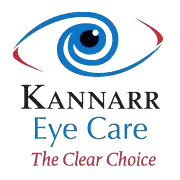Visual perception refers to a set of skills used to collect and interpret visual information taken in from our environment. The visual information gathered is combined with our other senses, allowing us to derive meaning from what we see. Through the process of merging visual data with our other senses,
Read more-
Eye Perception
Category: How the Eyes Work, Basic Visual Skills
-
Tearing
Category: Eye Symptoms
Suffering from watery eyes, also known as tearing, or epiphora, is a condition that happens when the eyes make too many tears or produce them constantly. There are many causes of excessive tearing, but only a few are signs of more serious conditions. Causes of Excessive Tearing One of two things often
Read more -
Swollen Eyelids
Category: Eye Symptoms
Swollen eyelids are a fairly common eye condition caused by inflammation or excess fluid in the connective tissues surrounding the eye. Depending on the cause, swollen eyelids can be painful or not painful and affect the upper eyelid, the lower eyelid, or both. Swollen eyes can be caused by many different
Read more -
Sleep in the Eyes (Eye Discharge)
Category: Eye Symptoms
Sometimes referred to as "sleep" or eye matter, eye discharge that appears in normal consistency upon waking is a typical part of your body's defense mechanisms, protecting your eyes from bacteria or other irritants. Eye discharge that appears in abnormal consistency, color, or quantities might be a
Read more -
Red Eye
Category: Eye Symptoms
The redness associated with “red eye” is usually caused by dilated or swollen blood vessels. As a result, the surface of the eye looks bloodshot. In contrast to vision problems or pain in the eye, red eye is often less of a concern. However, there are times when red eye may be a sign of a more serious
Read more -
Ptosis
Category: Eye Symptoms
Ptosis (TOE-sis) refers to an upper eyelid that droops and can occur in children or adults. The droop may be hardly visible, or it could cover the entire pupil. Depending on the severity of the droop, it could interfere with vision. People with ptosis may try to lift the eyelids or tilt their heads back
Read more -
Photophobia
Category: Eye Symptoms
Do you find yourself squinting or closing your eyes in bright light? It could be photophobia or acute light sensitivity. Eyes are designed to respond to light, but certain conditions can create light sensitivity. Exposure to sunlight, fluorescent light, incandescent light and other bright light sources
Read more -
Flashers and Floaters
Category: Eye Symptoms
Many people experience small, dark, cobwebby shapes drifting across their field of vision. These floaters are especially common as people age. Flashes, a similar phenomenon, are quick flickers of light. Both are usually harmless, but, occasionally, can be a sign of serious eye troubles. Causes Vitreous
Read more -
Eye Twitching
Category: Eye Symptoms
Few eye issues are as simultaneously subtle and annoying as a twitch that comes on suddenly and/or recurs frequently. A twitching eyelid may not appear visible to the people around you at all, but it can make you feel highly self-conscious and drive you to search for the cause and the cure. Unfortunately,
Read more -
Eye Pain
Category: Eye Symptoms
Eye pain is not normal and should always be checked by your eye care professional. It is especially urgent if the pain comes with any of the following symptoms: The pain is intense and sudden. Your eye is injured or is being irritated by a foreign object. The pain comes with sensitivity to light or
Read more -
Stargardt Disease
Category: Eye Diseases
Loss of eyesight and macular degeneration are typically associated with aging. Stargardt disease, however, an inherited form of macular degeneration, commonly affects children and young adults. Also referred to as Stargardt macular dystrophy (SMD) or flavimaculatus, the term Stargardt disease refers
Read more -
Retinitis Pigmentosa
Category: Eye Diseases
The term retinitis pigmentosa (RP) refers to a set of degenerative genetic diseases that gradually kill off the light-sensing cells (rods and cones) of the retina, eventually causing blindness. It is a relatively rare genetic disorder, affecting only 1 in 4,000 people. Retinitis pigmentosa can be difficult
Read more -
Macular Dystrophy
Category: Eye Diseases
You may have heard of macular degeneration, an age-related condition in which people suffer permanent vision loss due to damage in a part of the retina called macula. But you may not be so familiar with a similar macular condition that also causes vision loss -- even in young people. This condition,
Read more -
Keratoconus
Category: Eye Diseases
If you find yourself experiencing blurred or distorted vision that seems to get worse year after year, you may suffer from an irregularity of the cornea known as keratoconus. This condition is infamous for causing astigmatism and nearsightedness that can progress rapidly, calling for constant updates
Read more -
Cytomegalovirus (CMV) Retinitis
Category: Eye Diseases
Cytomegalovirus (CMV) retinitis is a serious disease causing compromised vision and ultimately a total loss of vision. CMV retinitis is typically associated with Acquired Immunodeficiency Syndrome (AIDS). In the early days of the AIDS epidemic, nearly one-quarter of all individuals diagnosed with late-stage
Read more -
Fuchs' Corneal Dystrophy
Category: Eye Diseases
Fuchs' dystrophy (pronounced fooks DIS-truh-fee) is an eye disease characterized by degenerative changes to the cornea’s innermost layer of cells. The cause for Fuchs' dystrophy is not fully understood. If your mother or father has the disease, then there is roughly a 50 percent chance that you will
Read more
